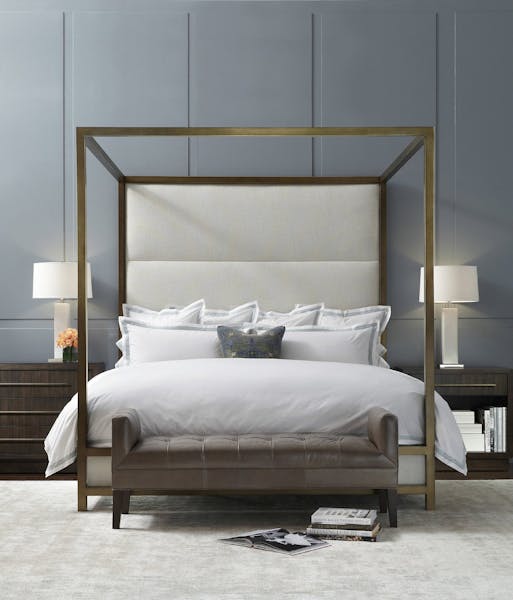Maria Sapuppo needed to sell her comfy bi-level with five bedrooms and three bathrooms last year, but her real estate agent warned it looked a little too "lived-in" and suggested staging it. Sapuppo, a River Vale, N.J., mother of two, agreed; she had a hard time looking at her house as a stranger would view it. She couldn't envision it any other way.
Though real estate agents have been advising clients on how to prepare their homes for sale for decades, staging has become more detailed and focused.
"It's decluttering, neutralizing colors and showcasing highlights of the home, such as hardwood floors," said Roberta Whitley Gomez, who staged Sapuppo's home and owns Whitley Realty in New Milford, N.J.
Proper staging can mean 6 to 20 percent more on a sale, and can help sell the home more quickly, experts say. Properties that have been staged typically spend 73 percent less time on the market, according to the Real Estate Staging Association.
How should a house look after staging? As the adage says, less is more.
Sapuppo, on the advice of Whitley Gomez, removed almost all the furniture. Bedrooms had a bed, a chair and a decorative piece, like a basket with flowers.
"We had no dressers — underwear and socks were in a basket at the bottom of my closet," Sapuppo said. "We took out anything that was personal."
The trick of staging, experts say, is to remove anything that makes the house look like, well, like it's yours. Take down those photographs of the grandkids, religious symbols and all that stuff on the refrigerator.
You want potential buyers to be able to imagine their own belongings in the home, yet you still need some items to show the actual size of the rooms.
"It's an oxymoron, but rooms look smaller with nothing in them," said Joyce Fierstat, a rental consultant with Cort Furniture in Hasbrouck Heights, N.J., where about a third of the company's business is staging homes. "With an empty bedroom, it's really difficult to tell what size bed would fit comfortably.
"You also want to use furniture or [other] items to draw the eye to the most pleasing part of the home," Fierstat said. "If you have spectacular views out a big picture window, you want a couch below it to draw your eye there. But if you have a concrete wall outside that window, you want curtains over it and the couch on a different wall."
Checklist for sellers
Most homeowners do their own staging based on their real estate agent's advice.
In addition to removing all manner of tchotchkes, experts have a list of staging must-dos to get top dollar for any home.
First, clean, clean and then clean some more. Who wants a house with a shower stall lined in mildew? Windows should sparkle to let in every glimmer of natural light, floors should be crumb-free and furniture clear of dust.
Second, make sure the tidiness stretches outside the house. Paint the front door, clear the walkway and driveway, make sure lights are working and fixtures gleam. Add a splash of color to that front door with a wreath.
Third, sellers need to focus on anything broken that they've been living with and ignoring. Fix that dripping faucet in the bathroom no one uses or the cracked tile you forgot about by the back door.
Finally, neutralize colors throughout the house. That vibrant teal in your daughter's bedroom? The I'm-so-tired-of-living-in-a-beige-house-purple you painted the little bathroom? Douse them with off-white.
Linda Stamker, an agent with Prominent Properties Sotheby's International Realty in Fort Lee, N.J., is convinced that staging a Cresskill, N.J., home is what helped sell it after it had been on the market for a year.
"It was brand new and empty," Stamker said. "The bedrooms looked really small, and buyers couldn't even tell if a bed would fit in them.
"When we got the listing in January — after it had been on the market for a year — we convinced the builder to put some furniture in it," Stamker said. "It sold in a week for $100 over the $688,000 asking price."
The price had been reduced a few times from the original $797,800, which Stamker acknowledges was instrumental in selling the house. But staging also played a pivotal role in moving it so quickly, she said.
"You want to give it some warm touches — put a book on a bed or a magazine on a coffee table," Stamker said. "I would say 99 percent of sellers do their own staging, working with their real estate agent. But when a house is completely empty, you might need to bring some furniture and items in."
Costs for renting items through a company can range from $2,500 to $5,000, depending on how much furniture and accessories are used and the length of time the house is on the market.
"Our prices range from about $300 to $350 a month per room," said Fierstat, from Cort Furniture. "Let's face it, a home needs to be priced right to sell, but staging can definitely make a difference."
Sapuppo, who sold her home in four months, attributes the relatively quick sale mainly to staging.
"My home was the type of house where teenagers grew up with friends — happy and comfy," Sapuppo said.
"But Roberta had a vision when she looked at it, and when she was done, the house just flowed. She made the whole place more open, so it looked like we were living there yet it wasn't personalized. Kind of amazing."

Minnesota Sports Hall of Fame: A class-by-class list of all members

This retired journalist changed professional wrestling from Mankato

